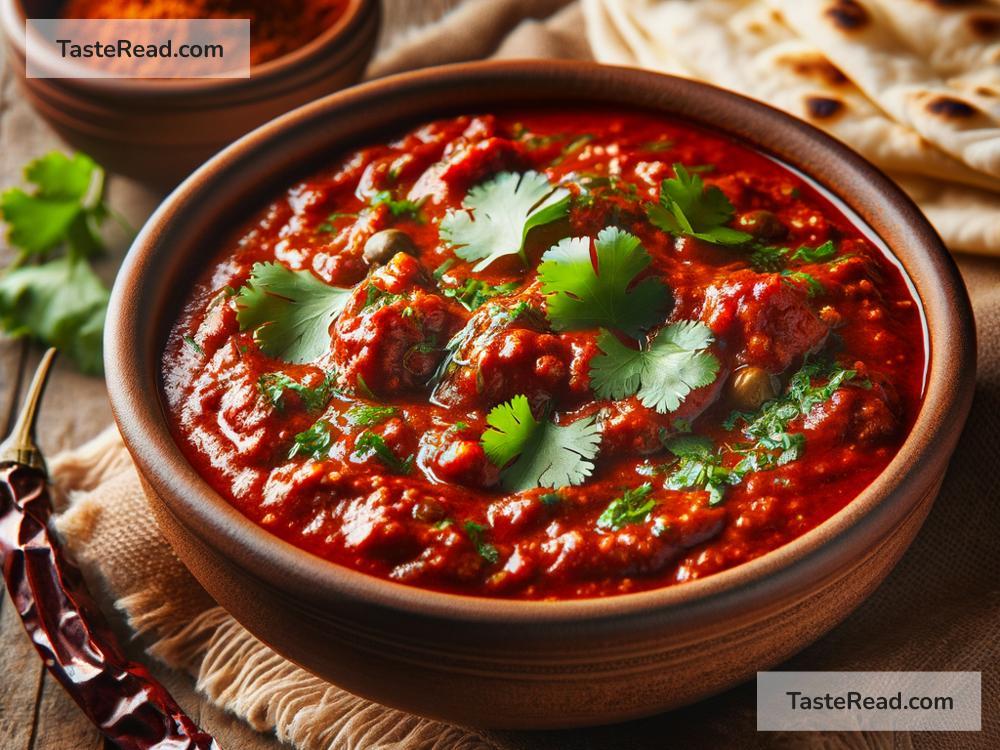How the Indian Rogan Josh Became a Mughal Legacy
In the rich tapestry of Indian cuisine, Rogan Josh holds a special place, its origin stories weaving through the lanes of history to the times of the Mughals. This vibrant, aromatic curry, known for its tender meat and a palette of flavors, is a testament to the culinary excellence that flourished under the Mughal Empire. But how did this delightful dish become a part of the colossal Mughal legacy? Let’s embark on a flavorful journey back in time to uncover the roots of Rogan Josh in Indian cuisine.
The Mughal Influence
The Mughal Empire, known for its opulence, art, architecture, and love for gastronomy, has left an indelible mark on many aspects of Indian culture, including its food. The Mughals were aficionados of elaborate meals and grand feasts, which were a way to display their wealth, power, and cultural sophistication. It was during their reign, particularly in the 16th to 19th centuries, that the culinary landscape of India was significantly enriched.
Mughal cuisine is characterized by its rich gravies, elaborate marinations, and use of aromatic spices, all meant to create dishes that were not only a feast for the stomach but also for the senses. Into this milieu of culinary experimentation and sophistication, Rogan Josh was born.
The Origins of Rogan Josh
Rogan Josh is originally a Persian dish, which found its way to India with the advent of the Mughals. The name itself, “Rogan Josh,” is derived from Persian, where “Rogan” means “oil” and “Josh” means “intense heat.” This essentially describes the method of cooking the dish, which involves braising meat (traditionally lamb or goat) in a gravy seasoned with garlic, ginger, and a melange of spices like cinnamon, cardamom, and cloves, among others.
However, the dish was adapted to local tastes and ingredients, evolving into the Rogan Josh we know today—a creamy, rich curry that gets its distinct red color not from tomatoes (a common misconception) but from the liberal use of Kashmiri red chili powder, which imparts a vibrant hue without an overpowering heat.
Rogan Josh and the Kashmiri Connection
While the Mughals introduced Rogan Josh to India, it was in the lush valleys of Kashmir that the dish found its true home. The cold climate of Kashmir was perfectly suited for the consumption of hearty, warm dishes like Rogan Josh. Over time, it became a staple of Kashmiri cuisine, especially among the Muslim population, and was often part of the ‘Wazwan’—a traditional multicourse meal in Kashmiri Muslim feasts.
The unique culinary techniques of the Kashmiri chefs, or ‘Wazas’, further refined Rogan Josh, balancing the robust flavors of the spices with the intrinsic qualities of the meat, leading to a dish that was aromatic, flavorful, and deeply comforting.
The Legacy Lives On
Today, Rogan Josh is synonymous with north Indian and specifically Kashmiri cuisine, admired not only in India but across the globe. It represents a perfect blend of Persian influence and local adaptation, a culinary gem polished under the Mughal love for fine dining.
Rogan Josh continues to be a significant dish in the spread of Mughal-inspired feasts, embodying the rich history and culinary traditions that the Mughals bequeathed to India. More than just a recipe, Rogan Josh is a narrative of cultural confluence, an example of how food can transcend boundaries, adapting and evolving, yet retaining its essence.
Conclusion
Rogan Josh, with its tender meat swimming in a flavorful spicy gravy, is more than just a culinary delight; it’s a dish steeped in history, embodying the legacy of the Mughals in India. As you savor each bite, remember the journey this dish has undertaken—from the royal kitchens of the Mughals, through the scenic valleys of Kashmir, to your plate, drawing together threads of diverse culinary traditions into a single, harmonious masterpiece. In every spoonful of Rogan Josh, one tastes the richness of history, the warmth of Indian hospitality, and the joy of a meal shared with loved ones, making it truly a legacy of the Mughal era.


